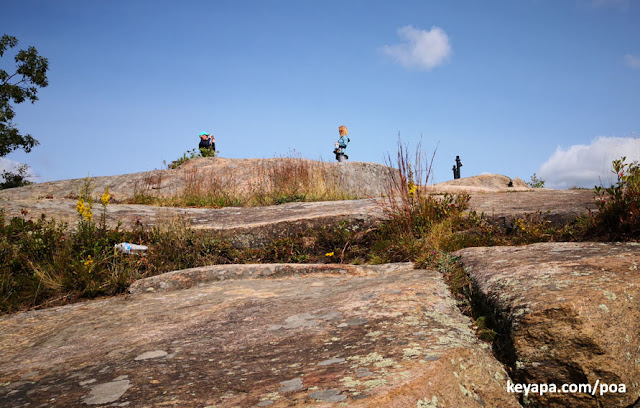 |
| Phragmites australis looking out over Hooks Creek Lake |
 |
| (PA) Phragmites australis, (SA) Sporobolus alterniflorus, (SP) Sporobolus pumilus near the Crabbing Bridge |
We went there again today to hike, and I spent some time in the Perrine Road Trail, in the general vicinity of the Crabbing Bridge. This where one can see all 3 major grass species in the area (see image above). The invasive Phragmites australis (PA) occupies areas close to the eastern end of the extended "walkway", with Sporobolus pumilus (SP) next to it, while the low marsh species Sporobolus alterniflorus (SA) is situated close to the water itself.
 |
| S. pumilus in front of P.australis stand |
It's fairly easy to distinguish the three, with P. australis being much taller than the other two, the darkish flowerhead rising high up in the air and usually drooping to one side. S. pumilus beside it is much shorter, the long thin leaves close to the ground to form graceful clumps.
 |
| View of S. alterniflorus from walkway to Crabbing Bridge |
S. alterniflorus is intermediate in size, and occupies most of the area all the way to the actual Crabbing Bridge. When we were walking over the walkway, I noticed that many of the culms had flowerheads in bloom.
The inflorescence was a spike, quite pointed at the end, and mostly green in color.
White anthers decorated the spikes and dangled out from the flattened spikelets. The anthers seemed quite long, almost sausage-like in shape. The term grub-like might even be used to describe it.
I spent some time taking pics of various blooms, which was not an easy task given that the walkway was perhaps only 2-3 meters in width, and due to Covid-19 restrictions I was trying to remain a bit far away from other passing visitors.
When people passed I tried to keep as close to the edge as possible, and the thought that I might overbalance and fall into the grasses was a constant thought in my mind. I can only imagine the commotion that would ensue if that happened.
Oh, the things we have to do for our passions ;-)






































